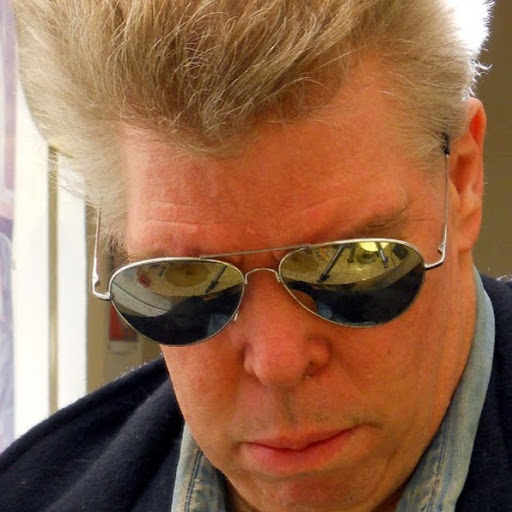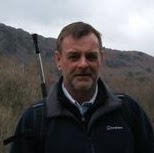Eric G Forster
age ~52
from Naperville, IL
- Also known as:
-
- Eric Forester
- Edward Forster
- Eric Foster
- Marilyn Marshall
- Phone and address:
-
1318 Brush Hill Cir, Naperville, IL 60540
6309466657
Eric Forster Phones & Addresses
- 1318 Brush Hill Cir, Naperville, IL 60540 • 6309466657
- 98 Macarthur Dr, Willowbrook, IL 60514
- 1008 Pleasant St, Oak Park, IL 60302
- 49 Jane St, New York, NY 10014
- 736 Buena Ave, Chicago, IL 60613
- Astoria, NY
- Milwaukee, WI
- Worcester, MA
Languages
English
Specialities
Social Work • Clinical Social Work
Resumes

Eric Forster
view sourceLocation:
United States

Eric Forster
view sourceLocation:
Naperville, Illinois
Industry:
Health, Wellness and Fitness
Certifications:
Licensed Clinical Social Worker, State of Illinois

Eric Forster Naperville, IL
view sourceWork:
Centene/IlliniCare
Jun 2011 to 2000
Program Specialist II King-Bruwaert House
Burr Ridge, IL
May 2007 to May 2011
Social Worker Ballard Healthcare
Des Plaines, IL
May 2003 to May 2007
Case Manager The Doe Fund, Inc
New York, NY
Feb 2002 to Dec 2002
Mental Health Specialist Barnard College
Sep 2001 to May 2002
Student Intern The Salvation Army East
New York, NY
Feb 2000 to Feb 2002
Case Worker Hour Children
New York, NY
Sep 2000 to Jul 2001
Student Intern Covenant House New York
New York, NY
Apr 1998 to Feb 2000
Resident Advisor
Jun 2011 to 2000
Program Specialist II King-Bruwaert House
Burr Ridge, IL
May 2007 to May 2011
Social Worker Ballard Healthcare
Des Plaines, IL
May 2003 to May 2007
Case Manager The Doe Fund, Inc
New York, NY
Feb 2002 to Dec 2002
Mental Health Specialist Barnard College
Sep 2001 to May 2002
Student Intern The Salvation Army East
New York, NY
Feb 2000 to Feb 2002
Case Worker Hour Children
New York, NY
Sep 2000 to Jul 2001
Student Intern Covenant House New York
New York, NY
Apr 1998 to Feb 2000
Resident Advisor
Education:
Fordham University
New York, NY
2002
Master's in Social Work Clark University
Worcester, MA
1996
Bachelor of Arts
New York, NY
2002
Master's in Social Work Clark University
Worcester, MA
1996
Bachelor of Arts

Eric Forster Fresno, CA
view sourceWork:
Internal Revenue Service
2008 to 2000
Mail Clerk Gerson Lehrman Group
New York, NY
2005 to 2011
Consultant Pelco Sales Incorporated
Clovis, CA
1994 to 2005
Technician Rand L. Stover Consulting Engineer
Fresno, CA
1986 to 1994
Electrician Assistant
2008 to 2000
Mail Clerk Gerson Lehrman Group
New York, NY
2005 to 2011
Consultant Pelco Sales Incorporated
Clovis, CA
1994 to 2005
Technician Rand L. Stover Consulting Engineer
Fresno, CA
1986 to 1994
Electrician Assistant
Education:
Belsaw Institute
2005 to 2006
Diploma in Computer Networking National Radio Institute
1998 to 2000 Fresno City College
1977 to 1979
2005 to 2006
Diploma in Computer Networking National Radio Institute
1998 to 2000 Fresno City College
1977 to 1979
Us Patents
-
Microwave Drying Process For Synthetic Polymers
view source -
US Patent:40550010, Oct 25, 1977
-
Filed:Sep 25, 1975
-
Appl. No.:5/616773
-
Inventors:Eric O. Forster - Scotch Plains NJ
Peter J. Creighton - Mendham NJ -
Assignee:Exxon Research & Engineering Co. - Linden NJ
-
International Classification:F26B 334
F26B 700 -
US Classification:34 1
-
Abstract:Volatile polar vehicles such as water or organic solvents, are removed from nonpolar materials by passing said material through at least one pneumatic conveyor resonating cavity operating at a microwave frequency of about 600 to about 50,000 MHZ. For example, a polymer such as polyvinyl chloride may be dried by conveying the polymer through said pneumatic conveyor operating at a frequency of 915 MHZ for a time sufficient to reduce the volatiles content to about 5 wt. % and subsequently conveying the partially dried material through a second pneumatic conveyor resonating cavity operating at a microwave frequency of 2450 MHZ for a time sufficient to reduce the polar vehicle content to below 0. 5 wt. %. The resonating cavities may constitute a single pneumatic conveyor having zones operating at different frequencies, said zones being isolated from one another by microwave suppressors such as "eggcrate" type suppressors. Alternately, several pneumatic conveyor systems, each operating at a different frequency, may be used.
-
System For Continuous Monitoring Of The Density Of Cryogenic Liquids Via Dielectric Constant Measurements
view source -
US Patent:39330303, Jan 20, 1976
-
Filed:Sep 9, 1974
-
Appl. No.:5/504143
-
Inventors:Eric O. Forster - Scotch Plains NJ
William R. L. Thomas - Holmdel NJ -
Assignee:Exxon Research and Engineering Company - Linden NJ
-
International Classification:G01N 900
F17C 1302 -
US Classification:73 32R
-
Abstract:A system has been invented for the continuous determination of density of cryogenic liquids such as LPG and LNG to within. +-. 0. 1% or better using differential capacitance measurements. This system would allow the detection of incipient density inversions in storage tanks and the accurate determination of quantities transferred from ship to shore to customers.
-
Microwave Drying Process For Synthetic Polymers
view source -
US Patent:39770893, Aug 31, 1976
-
Filed:Nov 18, 1971
-
Appl. No.:5/200257
-
Inventors:Eric O. Forster - Scotch Plains NJ
Peter J. Creighton - Mendham NJ -
Assignee:Exxon Research and Engineering Company - Linden NJ
-
International Classification:F26B 334
-
US Classification:34 1
-
Abstract:Volatile polar vehicles such as water or organic solvents, are removed from nonpolar materials by passing said material through at least one pneumatic conveyor resonating cavity operating at a microwave frequency of about 600 to about 50,000 MHZ. For example, a polymer such as polyvinyl chloride may be dried by conveying the polymer through said pneumatic conveyor operating at a frequency of 915 MHZ for a time sufficient to reduce the volatiles content to about 5 wt. % and subsequently conveying the partially dried material through a second pneumatic conveyor resonating cavity operating at a microwave frequency of 2450 MHZ for a time sufficient to reduce the polar vehicle content to below 0. 5 wt. %. The resonating cavities may constitute a single pneumatic conveyor having zones operating at different frequencies, said zones being isolated from one another by microwave suppressors such as "eggcrate" type suppressors. Alternately, several pneumatic conveyor systems, each operating at a different frequency, may be used.
-
Metal-Filled Plastic Material
view source -
US Patent:40243184, May 17, 1977
-
Filed:Feb 17, 1966
-
Appl. No.:4/528080
-
Inventors:Eric O. Forster - Scotch Plains NJ
Byron M. Vanderbilt - Westfield NJ -
Assignee:Exxon Research and Engineering Company - Linden NJ
-
International Classification:B32B 516
-
US Classification:428519
-
Abstract:A filled plastic composition, suitable for use as a radar shield, comprising (1) a first layer of hydrocarbon thermosetting plastic filled with metal particles of aluminum, iridium, tin, lead, bismuth, or elements from Group IIB to Group VIIB of the Periodic Table of the Elements and (2) a second layer of hydrocarbon thermosetting plastic filled with oxides of the above metals is disclosed.
Isbn (Books And Publications)


Medicine Doctors

Eric G Forster, Burr Ridge IL - LCSW
view sourceSpecialties:
Social Work
Clinical Social Work
Clinical Social Work
Address:
6101 S County Line Rd, Burr Ridge, IL 60527
6302309527 (Phone)
6302309527 (Phone)
Languages:
English
Googleplus

Eric Forster

Eric Forster

Eric Forster

Eric Forster

Eric Forster
Plaxo

Eric Forster
view sourceLos Angeles

Eric Forster
view sourceAnn Arbor, MI
Youtube
Classmates

Eric Forster
view sourceSchools:
Leechburg High School Leechburg PA 1991-1995
Community:
Leora Myers

Eric Forster
view sourceSchools:
New York Intermediate School 70 New York NY 1985-1989
Community:
Abbi Gold, Eugene Robinson, Marc Fisher, Tommy Collins, John Dornellas

Vero Beach High School, V...
view sourceGraduates:
Eric Pederson (1969-1973),
phyliss gardner (1972-1976),
Jessie Wright (1991-1995),
Amber Cooper (1990-1994),
Eric Forster (1990-1994)
phyliss gardner (1972-1976),
Jessie Wright (1991-1995),
Amber Cooper (1990-1994),
Eric Forster (1990-1994)

Leechburg High School, Le...
view sourceGraduates:
Eric Forster (1991-1995),
Eleanor Gamble (1943-1947),
Kegan Dombroski (2003-2007),
Aaron Dane (1982-1986),
Vince Papurello (1975-1979),
Marino Ravotta (1964-1968)
Eleanor Gamble (1943-1947),
Kegan Dombroski (2003-2007),
Aaron Dane (1982-1986),
Vince Papurello (1975-1979),
Marino Ravotta (1964-1968)

New York Intermediate Sch...
view sourceGraduates:
Eric Forster (1985-1989),
Maritza Perez (1989-1992),
Joanne Vazquez (1964-1968),
Terence Mark (1975-1976),
Coral Reyes (1979-1983)
Maritza Perez (1989-1992),
Joanne Vazquez (1964-1968),
Terence Mark (1975-1976),
Coral Reyes (1979-1983)

Eden High School, Eden, N...
view sourceGraduates:
Michael Sendor (1964-1968),
Eric Forster (1971-1975),
Casey Higgins (2001-2005),
Susan Heffernan (1958-1962),
Shelly Rogers (1970-1974)
Eric Forster (1971-1975),
Casey Higgins (2001-2005),
Susan Heffernan (1958-1962),
Shelly Rogers (1970-1974)

Eric Forster
view source
Mc Eric Forster Gebhardt
view source
Eric Forster
view source
Eric Forster
view source
Paul Eric Forster
view source
Eric Forster
view source
Eric Forster
view source
Eric Forster
view sourceFlickr
Myspace
Get Report for Eric G Forster from Naperville, IL, age ~52













